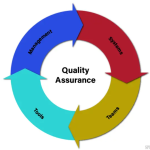Your car’s brakes are one of the most important safety systems in your vehicle. They allow you to stop quickly, avoid collisions, and stay in control on the road. Yet many drivers overlook early warning signs of brake problems until it’s too late. Understanding how brakes work and knowing when to book an inspection can save you from costly repairs and keep you safe behind the wheel.
Why Brakes Wear Out Over Time
Brakes operate under intense pressure and heat. Each time you press the pedal, brake pads press against the rotor, creating friction that slows your vehicle. Over time, this process naturally leads to wear. Factors like driving style, traffic conditions, and even weather can speed up this process. Regular maintenance is the only way to ensure your brakes stay effective and reliable.
Warning Signs Your Brakes Need Servicing
If you notice any of the following, it’s time to book a brake inspection:
- Squealing or grinding noises are often a sign of worn brake pads
- Soft or spongy pedal feel could indicate air or fluid issues
- Pulling to one side may suggest uneven brake wear
- Vibrations when braking can be caused by warped rotors
- Increased stopping distance is a serious red flag for safety
Ignoring these symptoms can turn minor problems into major repairs.
How Often Should Brakes Be Checked?
Most experts recommend having your brakes inspected at least once a year or every 10,000–15,000 km, depending on how you drive. However, if you frequently drive in stop-start traffic or tow heavy loads, more frequent checks are essential.
The Bottom Line
Your brakes are critical for both safety and performance. Addressing issues early prevents accidents, reduces long-term costs, and ensures you’re driving with confidence. Don’t wait for a warning light or a near miss — make brake inspections part of your regular car maintenance routine.


